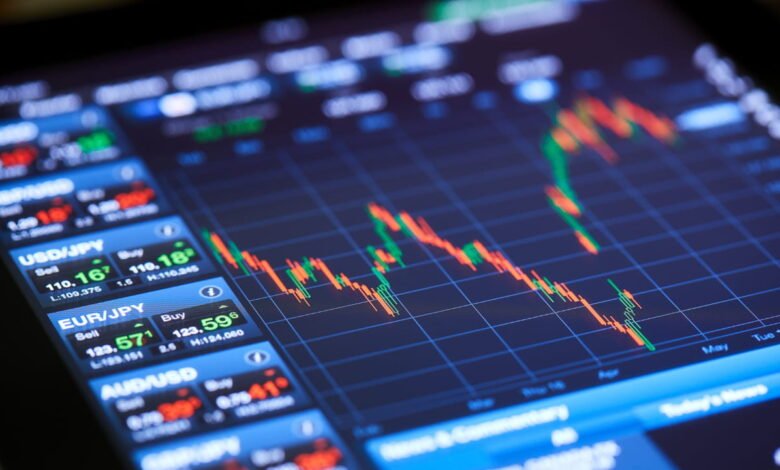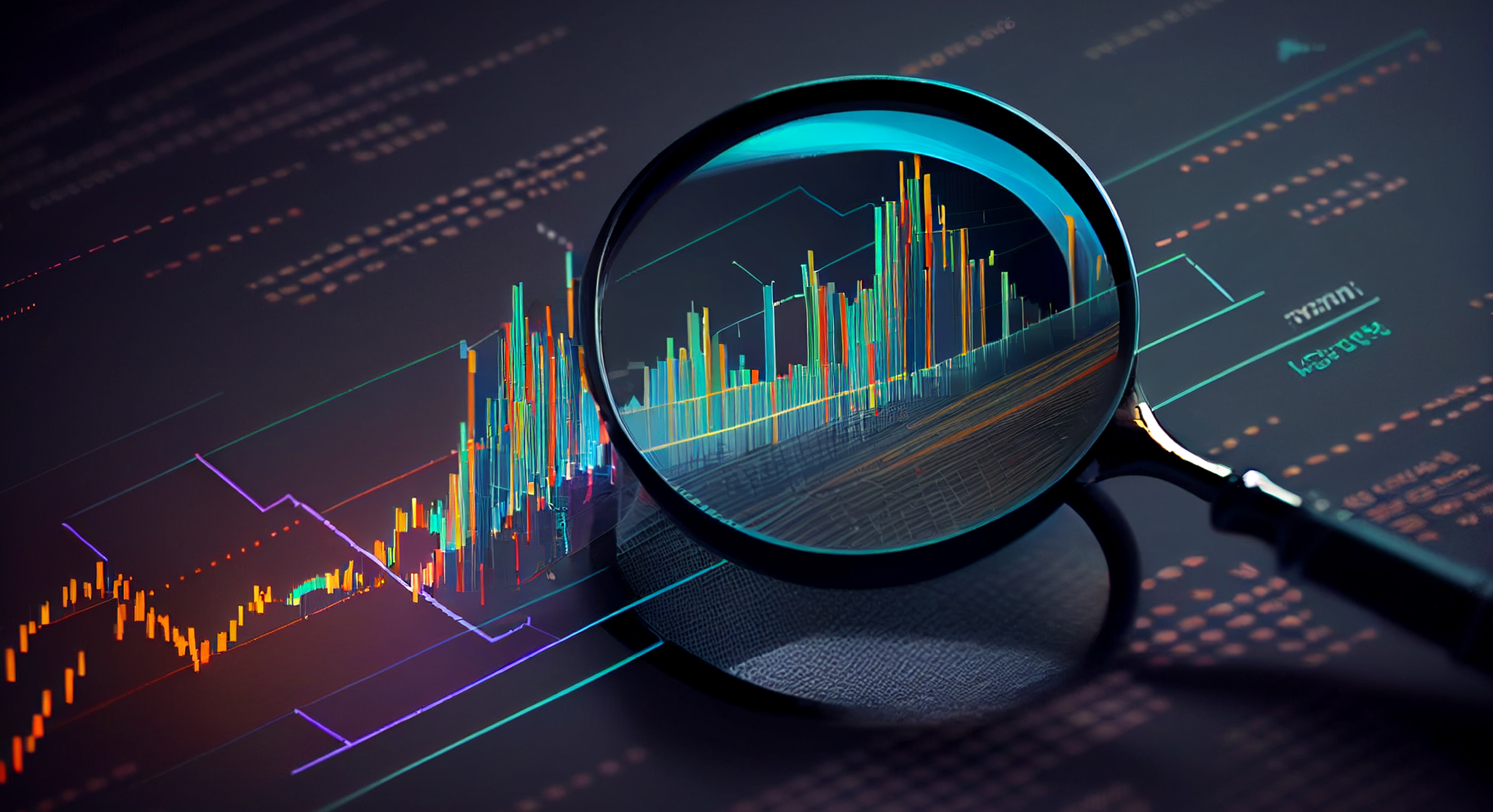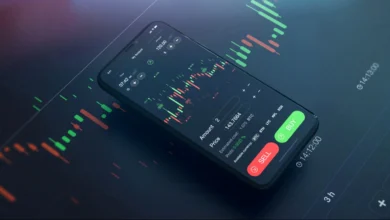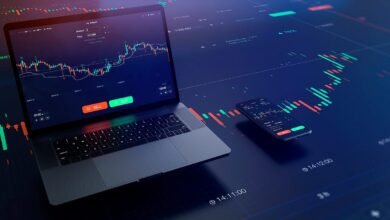Best Markets to Trade Online Complete 2025 Guide for Beginners

The digital revolution has transformed how investors access global financial opportunities, making various markets to trade online more accessible than ever before. Whether you’re a seasoned trader or just starting your investment journey, understanding the diverse landscape of online trading markets is crucial for building a profitable portfolio. From traditional stock exchanges to emerging cryptocurrency platforms, today’s traders have unprecedented access to markets that were once reserved for institutional investors. This comprehensive guide explores the most lucrative markets to trade online, providing you with the knowledge and strategies needed to navigate these dynamic financial environments successfully.
Online Trading Markets
Online trading has democratized access to global financial markets, allowing individual investors to participate in opportunities that generate trillions of dollars in daily trading volume. The evolution of technology has created sophisticated platforms that provide real-time data, advanced charting tools, and instant order execution across multiple asset classes.
Modern trading platforms have eliminated many traditional barriers to entry, including high minimum deposits, expensive broker fees, and limited market access. Today’s traders can diversify across various markets to trade online with relatively small initial investments, making it possible to build wealth gradually while learning the intricacies of different financial instruments.
The key to successful online trading lies in understanding market dynamics, risk management, and choosing the right combination of assets that align with your financial goals and risk tolerance. Each market operates under different conditions, regulatory frameworks, and volatility patterns, requiring tailored strategies for optimal performance.
Top Markets to Trade Online in 2025
Foreign Exchange (Forex) Market
The forex market stands as the largest and most liquid financial market globally, with over $7.5 trillion in daily trading volume. This market operates 24 hours a day, five days a week, making it one of the most accessible markets to trade online for investors worldwide.
Currency pairs are traded in three main categories: major pairs (EUR/USD, GBP/USD, USD/JPY), minor pairs (EUR/GBP, AUD/CAD), and exotic pairs (USD/ZAR, EUR/TRY). Major currency pairs typically offer the tightest spreads and highest liquidity, making them ideal for beginners entering the forex market.
The forex market’s appeal lies in its high leverage opportunities, with many brokers offering leverage ratios up to 1:500 for retail traders. However, this amplification of both profits and losses requires careful risk management and a thorough understanding of market fundamentals and technical analysis.
Economic indicators, central bank policies, geopolitical events, and market sentiment drive currency movements. Successful forex traders develop expertise in fundamental analysis, studying employment reports, inflation data, GDP growth, and monetary policy decisions that influence currency valuations.
Stock Market Trading
Equity markets remain among the most popular markets to trade online, offering exposure to individual companies and broader economic sectors. Major stock exchanges like the New York Stock Exchange (NYSE), NASDAQ, London Stock Exchange (LSE), and Tokyo Stock Exchange provide access to thousands of publicly traded companies.
Online stock trading platforms now offer fractional shares, allowing investors to purchase portions of expensive stocks like Amazon, Google, or Berkshire Hathaway with minimal capital. This innovation has made blue-chip investing accessible to traders with limited budgets while maintaining diversification benefits.
Day trading stocks requires an understanding of market microstructure, including bid-ask spreads, order types, and market maker behavior. Swing traders focus on longer-term price movements, typically holding positions for several days to weeks, while position traders may hold stocks for months or years.
Dividend-paying stocks provide additional income streams beyond capital appreciation, making them attractive for investors seeking regular cash flow. Growth stocks, value stocks, and dividend aristocrats each offer different risk-reward profiles suitable for various trading strategies and investment horizons.
Cryptocurrency Markets
Cryptocurrency markets have emerged as one of the most dynamic and volatile markets to trade online, offering 24/7 trading opportunities across hundreds of digital assets. Bitcoin, Ethereum, and other established cryptocurrencies provide relatively stable trading options, while altcoins offer higher risk-reward potential.
The cryptocurrency ecosystem includes spot trading, futures contracts, options, and decentralized finance (DeFi) protocols. Major exchanges like Binance, Coinbase, Kraken, and FTX provide sophisticated trading tools comparable to traditional financial markets, including advanced charting, algorithmic trading, and portfolio management features.
Crypto trading strategies range from scalping minute-by-minute price movements to long-term holding (HODLing) based on technological adoption and network growth. The market’s high volatility creates opportunities for significant profits but also substantial losses, requiring strict risk management protocols.
Regulatory developments significantly impact cryptocurrency markets, with government announcements often causing dramatic price swings. Traders must stay informed about regulatory changes, technological upgrades, and adoption trends that influence digital asset valuations.
Commodities Trading
Commodity markets provide exposure to physical goods, including precious metals (gold, silver, platinum), energy resources (crude oil, natural gas), agricultural products (wheat, corn, soybeans), and industrial metals (copper, aluminum). These markets offer diversification benefits and inflation hedging capabilities.
Online commodity trading typically occurs through futures contracts, exchange-traded funds (ETFs), or contracts for difference (CFDs). Each instrument provides different exposure levels and risk profiles, allowing traders to choose appropriate vehicles based on their capital and risk tolerance.
Gold and silver trading remain popular during economic uncertainty, serving as safe-haven assets when stock markets decline. Energy commodities like crude oil respond to geopolitical events, supply disruptions, and seasonal demand patterns, creating trading opportunities for informed investors.
Agricultural commodities follow seasonal cycles influenced by weather patterns, crop reports, and global supply-demand dynamics. Understanding these fundamental factors is crucial for successful commodity trading strategies.
Popular Trading Instruments and Strategies
 Exchange-Traded Funds (ETFs)
Exchange-Traded Funds (ETFs)
ETFs combine the diversification benefits of mutual funds with the trading flexibility of individual stocks. These instruments track various indices, sectors, commodities, or investment strategies, providing instant portfolio diversification through single transactions. Sector ETFs allow targeted exposure to specific industries like technology (XLK), healthcare (XLV), or financial services (XLF) without selecting individual stocks. International ETFs provide geographic diversification across developed and emerging markets, reducing home country bias in investment portfolios.
Leveraged and inverse ETFs offer amplified exposure to market movements, appealing to short-term traders seeking enhanced returns. However, these complex instruments carry additional risks and are generally unsuitable for long-term holding due to volatility decay effects. Bond ETFs provide fixed-income exposure across different credit qualities, maturities, and geographic regions. These instruments offer regular income distributions while maintaining liquidity advantages over individual bond investments.
Options Trading
Options contracts provide leveraged exposure to underlying assets while limiting maximum loss to the premium paid. Call options profit from rising prices, while put options benefit from declining values, allowing traders to profit in various market conditions. Covered call strategies generate additional income from stock holdings by selling call options against existing positions. Cash-secured puts allow traders to acquire stocks at desired prices while collecting option premiums during the waiting period.
Advanced options strategies like iron condors, butterflies, and straddles provide sophisticated approaches to volatility trading and range-bound markets. These strategies require a deeper understanding of the options Greeks (delta, gamma, theta, vega) and their impact on option pricing. Options expire worthlessly if finishing out-of-the-money, making time decay (theta) a critical factor in strategy selection. Successful options traders balance directional bias with time decay considerations and implied volatility levels.
Futures Contracts
Futures markets provide standardized contracts for the delivery of commodities, currencies, indices, and interest rates at specified future dates. These markets offer high leverage, deep liquidity, and efficient price discovery mechanisms for various asset classes. Index futures like E-mini S&P 500 (ES) and E-mini NASDAQ (NQ) provide cost-effective exposure to broad market movements with favorable tax treatment for active traders. Currency futures offer alternatives to spot forex trading with centralized clearing and regulatory oversight.
Commodity futures enable direct exposure to physical goods without storage concerns or delivery requirements. Energy futures, agricultural contracts, and metals futures each respond to unique supply-demand fundamentals requiring specialized knowledge for successful trading. Futures trading requires an understanding of margin requirements, contract specifications, and delivery procedures. Most retail traders close positions before expiration to avoid physical delivery obligations.
Risk Management in Online Trading
Position Sizing and Capital Allocation
Effective risk management begins with appropriate position sizing relative to account size and risk tolerance. The 1-2% rule suggests risking no more than 1-2% of trading capital on any single trade, ensuring survival during inevitable losing streaks. Portfolio heat measures aggregate risk across all open positions, preventing overexposure during correlated market movements. Diversification across uncorrelated assets and time frames reduces portfolio volatility while maintaining return potential.
Kelly Criterion provides a mathematical framework for optimal position sizing based on win rate and average win-loss ratios. However, practical application often requires conservative adjustments to account for estimation errors and psychological factors. Risk-adjusted returns metrics like the Sharpe ratio and maximum drawdown help evaluate trading performance beyond simple profit calculations. These measures provide insight into strategy efficiency and sustainability over extended periods.
Stop-Loss and Take-Profit Strategies
Stop-loss orders limit downside risk by automatically closing positions when prices move against expectations. Proper stop placement balances protection against normal market volatility with meaningful risk reduction. Technical stop-loss levels include support/resistance breaks, moving average violations, and volatility-based distances. Fundamental stops might trigger on earnings disappointments, regulatory changes, or macroeconomic shifts affecting underlying assets.
Take-profit targets lock in gains when prices reach predetermined levels, removing emotion from exit decisions. Scaling out of positions allows partial profit-taking while maintaining exposure to continued favorable moves. Trailing stops adjust higher as prices move favorably, protecting profits while allowing continued upside participation. These dynamic orders require careful calibration to avoid premature exits during normal retracements.
Technology and Tools for Online Trading
Trading Platforms and Software
Modern trading platforms provide sophisticated order management, charting capabilities, and market analysis tools rivaling professional institutional systems. Popular platforms like MetaTrader, TradingView, and broker-specific applications offer customizable interfaces and advanced functionality. Mobile trading apps enable position monitoring and order placement from anywhere with internet connectivity. Push notifications alert traders to important market developments, order fills, and technical indicator signals in real-time.
API connectivity allows algorithmic trading through custom programming or third-party automation services. These interfaces enable systematic strategy execution without manual intervention, removing emotional bias from trading decisions. Cloud-based platforms provide access to trading tools from any device without software installation requirements. Web-based applications often include social trading features, strategy sharing, and community interaction capabilities.
Market Analysis Tools
Technical analysis software provides extensive charting capabilities with hundreds of indicators, drawing tools, and pattern recognition algorithms. Advanced platforms offer backtesting functionality to evaluate strategy performance using historical data. Fundamental analysis tools aggregate economic data, earnings reports, and news feeds relevant to traded assets. Screening capabilities help identify opportunities meeting specific criteria across thousands of potential investments.
Sentiment analysis tools monitor social media, news sentiment, and options flow to gauge market psychology. These alternative data sources provide additional context for trading decisions beyond traditional price-based analysis. Economic calendars highlight scheduled announcements affecting market volatility, including earnings releases, economic indicators, and central bank meetings. These tools help traders avoid unexpected volatility or position appropriately for anticipated events.
Regulatory Environment and Broker Selection
Understanding Trading Regulations
Financial market regulations vary significantly across jurisdictions, affecting available leverage, investor protections, and tax treatment. Major regulatory bodies include the SEC and CFTC in the United States, FCA in the United Kingdom, and ASIC in Australia. Know Your Customer (KYC) and Anti-Money Laundering (AML) requirements mandate identity verification and source of funds documentation for account opening. These processes, while sometimes cumbersome, provide important investor protections and market integrity.
Pattern Day Trader (PDT) rules in the United States require $25,000 minimum account balance for unlimited day trading in margin accounts. Understanding these restrictions helps traders structure their activities within regulatory frameworks. Tax implications vary by jurisdiction, trading frequency, and asset class. Some countries offer favorable tax treatment for certain trading activities, while others impose significant capital gains obligations on investment profits.
Choosing the Right Broker
Broker selection significantly impacts trading success through factors including execution quality, available markets, fee structures, and customer support. Regulated brokers provide deposit insurance and dispute resolution mechanisms protecting client funds. Commission structures vary widely, with some brokers offering zero-commission stock trading while charging spreads on forex positions. Total trading costs include commissions, spreads, financing charges, and any inactivity fees over time.
Platform quality, reliability, and available features affect trading efficiency and strategy implementation. Demo accounts allow evaluation of broker platforms and services before committing real capital to trading activities. Customer support quality becomes crucial during technical issues or account problems affecting trading activities. Responsive support teams with multiple communication channels provide confidence and peace of mind for active traders.
Building a Profitable Trading Strategy
 Developing Your Trading Plan
Developing Your Trading Plan
Successful trading requires written plans specifying entry criteria, exit rules, position sizing, and risk management parameters. Trading plans provide discipline and consistency, removing emotional decision-making during stressful market conditions. Market selection should align with available time, capital requirements, and personal interests. Day traders might focus on liquid markets with tight spreads, while swing traders may prefer markets with clear trending characteristics.
Backtesting strategies using historical data provides insight into expected performance, drawdown periods, and optimal parameter settings. Paper trading allows strategy refinement without financial risk before implementing with real capital. Performance tracking and analysis enable continuous improvement through the identification of strengths, weaknesses, and areas requiring adjustment. Regular strategy reviews ensure adaptation to changing market conditions and personal circumstances.
Time Management and Trading Schedule
Different markets to trade online operate on various schedules, requiring consideration of personal availability and lifestyle constraints. Forex markets operate 24/5, while stock markets have specific hours varying by geographic location. Trading session overlap periods often provide increased volatility and opportunity, particularly in forex markets when major financial centers operate simultaneously. Understanding these patterns helps optimize trading timing and resource allocation.
Part-time traders must balance market analysis, position monitoring, and order management with other responsibilities. Automated tools and alerts help manage positions when unable to actively monitor markets continuously. Full-time trading requires disciplined schedules, regular breaks, and clear separation between trading and personal time. Maintaining work-life balance prevents burnout and emotional decision-making, affecting trading performance.
Common Mistakes to Avoid
Overtrading and Emotional Decision Making
Overtrading represents one of the most common and costly mistakes among retail traders, often resulting from excitement, boredom, or attempts to recover losses quickly. Quality trades based on solid analysis typically outperform quantity-focused approaches. Emotional trading decisions, including fear of missing out (FOMO) and revenge trading after losses, consistently underperform systematic approaches. Successful traders develop emotional discipline through experience, education, and structured decision-making processes.
Chasing performance by abandoning proven strategies during temporary drawdowns often leads to buying high and selling low behaviors. Consistency and patience typically produce better long-term results than constantly switching approaches. Social media and trading chat rooms can amplify emotional responses and encourage impulsive decisions. Independent analysis and personal accountability produce more reliable trading outcomes than following crowd sentiment.
Inadequate Risk Management
Risking excessive capital on individual trades or correlated positions can lead to catastrophic losses, destroying trading accounts. Conservative position sizing ensures survival during inevitable losing periods while maintaining growth potential. Neglecting stop-loss orders or moving them against positions exposes traders to unlimited downside risk. Disciplined risk management requires accepting small losses to preserve capital for future opportunities.
Failing to diversify across different markets, time frames, or strategies concentrates risk unnecessarily. Proper diversification reduces portfolio volatility while maintaining return potential through various market conditions. Ignoring the correlation between positions can create unexpected risk concentration during market stress periods. Understanding how different assets move together helps maintain appropriate risk levels across portfolio holdings.
Advanced Trading Techniques
Algorithmic and Automated Trading
Algorithmic trading uses computer programs to execute trades based on predetermined criteria, removing emotional bias and enabling systematic strategy implementation. These approaches can monitor multiple markets simultaneously and react faster than manual trading. Simple automation might include stop-loss and take-profit orders, while complex systems incorporate machine learning algorithms analyzing vast amounts of market data. Starting with basic automation and gradually increasing complexity often produces better results.
Backtesting and forward testing are crucial for algorithmic strategy development, ensuring robust performance across various market conditions. Paper trading allows strategy refinement without financial risk before deploying automated systems. Risk management becomes even more critical with automated systems, as errors or unexpected market conditions can amplify losses rapidly. Circuit breakers, position limits, and regular monitoring help prevent catastrophic outcomes.
Portfolio Diversification Strategies
Geographic diversification spreads risk across different countries and economic regions, reducing exposure to local economic problems or political instability. International markets often move independently, providing portfolio stability benefits. Sector diversification prevents overconcentration in specific industries that might face coordinated challenges. Technology, healthcare, finance, and consumer goods sectors often perform differently during various economic cycles.
Asset class diversification combines stocks, bonds, commodities, and alternative investments with different risk-return characteristics. This approach can improve risk-adjusted returns through various market environments. Time diversification through dollar-cost averaging or systematic rebalancing reduces timing risk and takes advantage of market volatility. Regular investment schedules often outperform attempts to time market entry and exit points.
Also Read: Best International Markets to Trade in 2025 Complete Global Trading Guide
Future Trends in Online Trading
Artificial Intelligence and Machine Learning
AI-powered trading tools are becoming more sophisticated and accessible to retail traders, offering pattern recognition, sentiment analysis, and predictive modeling capabilities previously available only to institutional investors. Machine learning algorithms can analyze vast amounts of alternative data, including satellite imagery, social media sentiment, and economic indicators, to identify trading opportunities. These tools continuously improve performance through learning from new data.
Robo-advisors provide automated portfolio management services combining passive investing with active rebalancing and tax optimization. These services democratize professional investment management at lower costs than traditional advisory services. Natural language processing enables analysis of news, earnings calls, and regulatory filings for investment insights. These capabilities help traders stay informed about fundamental developments affecting their positions.
Blockchain and Decentralized Finance
Decentralized exchanges (DEXs) enable peer-to-peer trading without traditional intermediaries, potentially reducing costs and increasing privacy. These platforms operate 24/7 and provide access to emerging tokens and innovative financial products. Smart contracts automate complex financial transactions, including lending, borrowing, and yield farming activities. These programmable agreements execute automatically when predetermined conditions are met, reducing counterparty risk.
Tokenization of traditional assets, including real estate, commodities, and art, creates new trading opportunities and improves liquidity for previously illiquid investments. This trend may revolutionize how various assets are bought and sold. Central Bank Digital Currencies (CBDCs) may transform how currencies are traded and settled, potentially improving efficiency and reducing costs in international transactions.
Conclusion
The landscape of markets to trade online continues expanding, offering unprecedented opportunities for investors willing to educate themselves and implement disciplined strategies. From traditional stock exchanges to emerging cryptocurrency platforms, today’s traders can access global markets that generate trillions in daily volume from their computer or mobile device.
Success in online trading requires continuous learning, disciplined risk management, and realistic expectations about returns and timeline. Start with well-regulated, liquid markets while building your knowledge and experience gradually. Focus on developing a systematic approach rather than seeking quick profits, as sustainable trading success comes from consistent application of proven principles over time.
Whether you choose forex, stocks, cryptocurrencies, or commodities, the key lies in thorough preparation, appropriate position sizing, and emotional discipline. The markets to trade online will continue evolving with technological advances and regulatory changes, creating new opportunities for prepared traders.
Begin your trading journey today by researching reputable brokers, opening a practice account, and developing your first trading plan. The global financial markets await your participation – start with proper education and gradually build your expertise across the exciting world of online trading.
FAQs
Q: What are the best markets to trade online for beginners?
A: Beginners should start with liquid, well-regulated markets like major stock exchanges (NYSE, NASDAQ) or major forex pairs (EUR/USD, GBP/USD). These markets offer tight spreads, abundant educational resources, and predictable behavior patterns that help new traders learn fundamental concepts without excessive complexity or risk.
Q: How much money do I need to start trading online markets?
A: Most online brokers now offer zero or low minimum account requirements, allowing traders to start with as little as $100-500. However, having $1,000-5,000 provides better risk management flexibility and position sizing options. The Pattern Day Trader rule requires $25,000 for unlimited day trading in US margin accounts.
Q: Which online trading platform is best for multiple markets?
A: Interactive Brokers, TD Ameritrade, and E*TRADE offer comprehensive access to stocks, options, futures, forex, and international markets through single accounts. TradingView provides excellent charting and analysis tools across all asset classes, while MetaTrader dominates forex and CFD trading platforms globally.
Q: Are cryptocurrency markets safe to trade online?
A: Cryptocurrency trading involves significant risks, including extreme volatility, regulatory uncertainty, and potential exchange security breaches. However, established exchanges like Coinbase, Binance, and Kraken implement strong security measures and regulatory compliance. Start with small positions and use reputable, regulated platforms.
Q: How do I manage risk when trading multiple markets online?
A: Implement position sizing rules limiting risk to 1-2% of capital per trade, diversify across uncorrelated assets and time frames, use stop-loss orders consistently, and monitor portfolio heat to avoid overexposure. Consider the correlation between different markets during stress periods when seemingly unrelated assets may move together.




